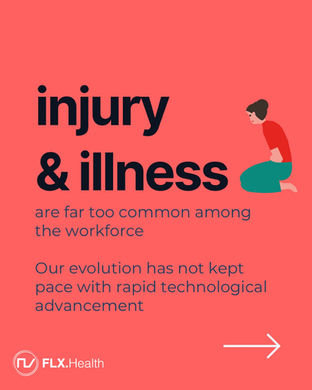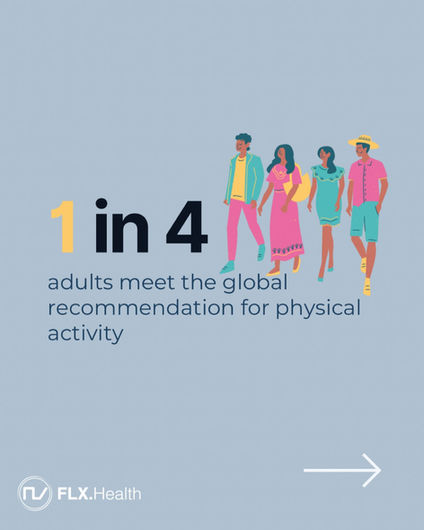
The Improvement of Movement
How do I know FLX works?
Intrinsic Biomechanics Model
FLX uses our Intrinsic Biomechanical Model which was developed by studying the biomechanics of 4000 people. The insight from the users and healthcare professionals from this study was used to develop the APP and allows us to understand why your body moves as it does and to spot issues that may lead to pain or musculoskeletal problems. The model creates a personalised physical therapy program to fix the issues.
The model has been clinically proven in real world settings to:
- Reduce the risk of musculoskeletal disease and injury
- Help you self-manage pain
- Support healthy movement

*
*Baseline-controlled (1) study comparing incidence of reported musculoskeletal issues over the 12-week study with baseline level of the preceding month (p<0.05).
Reduces Musculoskeletal Disease
After 12 weeks of intervention was proven to reduce musculoskeletal disease by up to 64%*
Reduces Absenteeism
Introduced over 3 quarters FLX was able to reduce absenteeism due to lower back pain by 52%** starting from the first quarter of implementation

**
**Historical-control (1) test comparing absenteeism from back pain over three quarters matched to the same calendar period of the preceding year (p<0.05).
Reduces Absenteeism
Self-manages Pain
Over a 6 week period FLX was shown to reduce pain by up to 75% (2)

Supports Movement
Over 12 weeks FLX was proven to improve flexibility by 149%, mobility by 42% and function by 95% (2)


FLX is Endorsed by Fellow Independent Healthcare Professionals
Mike Grice is a Registered Osteopath, Clinical Anatomist and Intrinsic Biomechanics Coach. FLX is a unique Intrinsic Biomechanics Profiling and Clinical app that helps to distinguish between everyday aches and pains and clinical problems and then provide a personalised testing and exercise programme specifically to the user.
The algorithm behind FLX is designed to help identify areas of the body where movement may be affected and then provide exercises, at an appropriate level for the individual, to help increase that persons capacity to perform the tasks they can’t currently do or to help reduce the risk of not being able to perform these tasks in the future.
The unique algorithm helps to also identify whether there may be a clinical reason behind the person’s test results and then recommend a series of tests/exercises and then escalation, if needed, to a referral pathway so that the individual can get the help they need sooner.
We use this process in our clinic on a daily basis and all of the tests and exercises have been selected so that the person using FLX has the best possible test or exercise based on current evidence.
I presented the concepts behind the Intrinsic Biomechanics Model at the IOC world conference for Injury Prevention in Monaco and those concepts are now available to anyone using FLX.
Mike Grice, Sports Osteopath (Movement Therapy Clinics) and Course Director (Movement Therapy Education)
NOTES:
1. Placebo-controls are impractical in studies of physical therapy as it is impossible to omit the 'active' element of exercise, movement and stretching. Studies are controlled using either data from the last month before the intervention (baseline-controlled) or a matched calendar period from the preceding year (historical control) as these were considered adequate representations of the 'untreated' state.
2. These studies are real world evidence data showing improvements in pain and movement in absolute terms from use to the FLX programs in real world settings.














